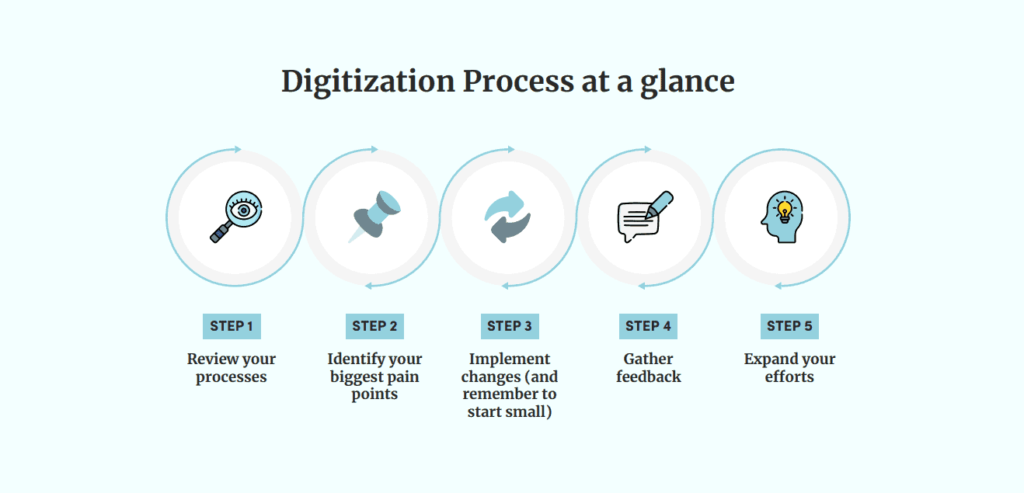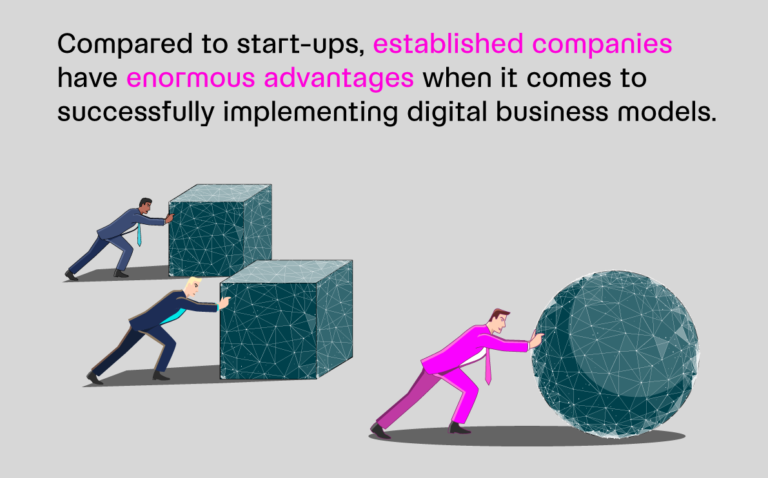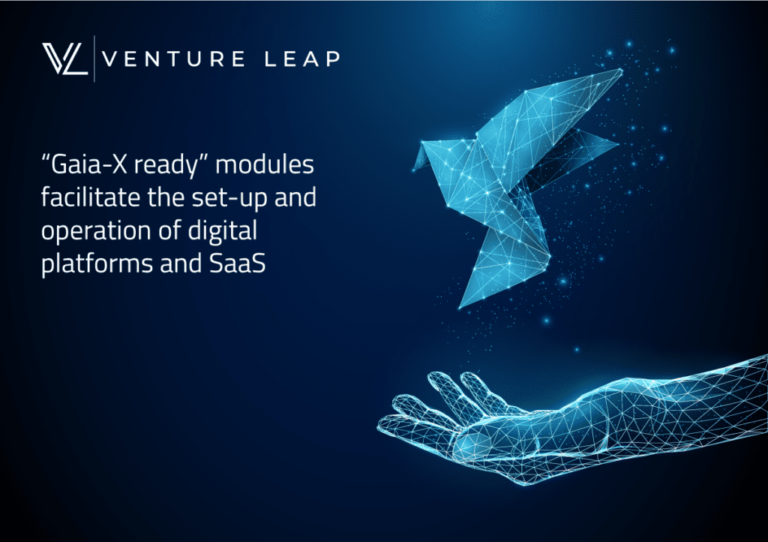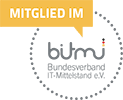Today’s tech-savvy real estate firms can dominate their analog rivals, and not just because technology saves them money. Sure, smarter resource allocation will reduce costs over time, but digitalizing real estate business can have a ripple-effect on your entire business.
Transitioning from manual to digital processes can help you:
- Close deals faster, generating more revenue
- Create a seamless, pain-free customer journey (leading to more referrals)
- Attract top agents who will outsell the competition
But you may be wondering…
Where, exactly, do you begin?
The idea of digitalizing real estate business may seem overwhelming, and that’s why we wrote this blog post—to help brokers and real estate agents take their firms into the 21st century without losing their minds.
Follow these 5 steps to develop an intelligent, cost-effective strategy that will modernize your operations without interrupting the normal flow of business.
The good news!
You don’t have to do it all overnight. In fact, the best way to approach it is to start small and address changes incrementally based on feedback from your employees—something we’ll explore in detail throughout the post.
Step 1: Review your processes
The first step to digitalizing real estate business is to get a bird’s eye view of everything your business does, from customer-facing activities to backend processes that only you and your employees know about.
Make a list of all your processes, including things like:
- Advertising
- Property listings (including photos, videos, etc.)
- Email marketing
- Keeping tracking of leads and managing follow up
- Closing procedures (from collecting earnest money to signing documents)
- Accounting and bookkeeping
- Time tracking for hourly employees
- Internal project management
Reach out to your entire staff and have them add anything to the list that is part of their job description. Let them know you’re working to make their job easier through technology and you need their help identifying opportunities for digitalization.
Step 2: Identify your biggest pain points
Once you’ve got a clear grasp of all your processes, it’s time to identify the areas that are causing the most stress. These usually arise from old habits that are hard to break—those things you do a certain way because you’ve “always done them that way.” It’s time to break free of old habits.
Are you keeping track of your internal processes and crunching numbers on Excel spreadsheets, for example? While technically a digital tool, there are far better solutions out there for things like keeping track of client relationships, managing projects, and tracking certain financial figures. Look for software solutions designed specifically for the real estate business—ones that map key data to a centralized application so everyone is on the same page and your info isn’t spread across multiple files.
Are you still signing manual documents instead of using Docusign? Are you using manual processes to manage transactions instead of using platforms like DotLoop?
Talk to your agents and staff to find out what their biggest frustrations are, and consider how much money your firm might lose each year based on:
- Time spent cleaning up messes
- Customers/referrals lost due to inefficiency
- Impact on workplace morale when things don’t run smoothly
Obviously, there’s no easy way to calculate exact opportunity costs for messy, outdated processes, but when you consider these factors, certain issues will rise to the surface as major pain points. Identify those paint points, and move on to Step 3.
Step 3: Implement changes (and remember to start small)
Now that you know your biggest pain points, choose one or two processes to digitalize. Start small—that way you can evaluate your progress as you go and see what needs to be tweaked.
This approach is rooted in a Silicon Valley model called the Minimum Viable Product (MVP). It typically refers to product launches from software companies, but it can also apply to changes made to internal processes.
The idea is that you when launch a product (or a change to a process), it doesn’t need to be perfect—it just needs to be minimally viable. In other words, it needs to work as expected, and after you launch it you can begin gathering feedback from end users. This is much more valuable than all the guessing you can do beforehand!
After all, the people who use your new solution on a daily basis will be able to tell you what works and what doesn’t. This is far more efficient than wasting countless hours developing a solution based on guess work, only to discover that it has serious flaws and needs massive changes. With an MVP, your end users will help you perfect your processes from the beginning and improve with every iteration.
Step 4: Gather feedback
When digitalizing real estate business, keep in mind that some employees don’t like to rock the boat. They’ll normally take the technology you give them and adapt without complaining, so they need to know that this not the time to grin and bear it.
Let them know you want to hear it all. What do they love and what do they hate? What works well and what needs improvement? Sit down with them one-on-one to dig deep and get real, actionable feedback. That’s the only way you can ditch the bad solutions and tweak the good ones until they’re perfect.
Step 5: Expand your efforts
Once you’ve successfully digitized one of your outdated processes, move on to the next opportunity. And be aware that continuous improvement is a cycle, not a final destination.
Return to Step 1 and review your processes in light of your most recent updates because things may have changed. It’s possible, for example, that one update solved multiple problems, reducing the urgency of something you once considered a top priority. On the other hand, digitizing one process might increase the need to digitize a process you initially considered a lower priority—so don’t be afraid to move things around.
Continue through each step, noting the pain points, implementing changes, gathering feedback, and tweaking things as you go.

Managing long-term change—the right way
Remember that change management is a group effort, and buy-in is critical. When you involve your entire staff, you’re not only more likely to get that buy-in, but you’ll also get better feedback and end up with superior processes. In short, your efforts will be effective, sustainable, and profitable.
With this in mind, keep the lines of communication open between management and everyone else. Empower your entire staff to spot and openly discuss opportunities for improvement. After all, technology is constantly improving, and staying on top of those changes will keep your real estate firm competitive in the years and decades to come.
Need a little help from a friend?
At Venture Leap, we help companies streamline their processes with high-tech solutions that improve their bottom line. In other words, we can guide you through every step listed above, from reviewing your processes and identifying your pain points to developing a fully digitized business.
Contact us today to learn how we can take your real estate business to the next level.




